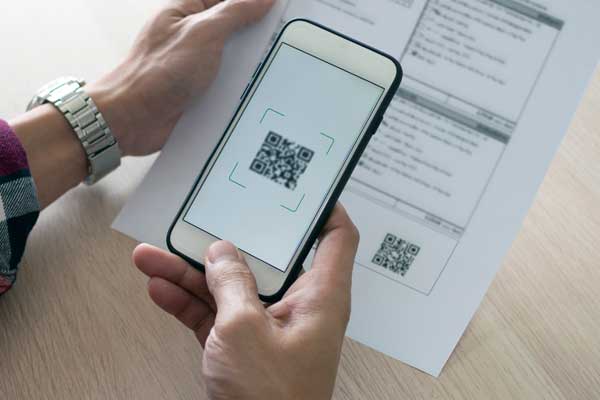Being an SME (small to medium enterprise) can be challenging. It can often be difficult to stand out and get your messaging seen by prospects and, a lot of the time, even if your messaging is being seen, it doesn’t guarantee potential customers will engage with it.
For SMEs, creating and growing your audiences is key, as is having them engage with your content- be it marketing or service messages. Successfully engaging an audience increases response rates improves brand knowledge and heightens satisfaction. Engaged audiences are more likely to share their experience with others too. They become your brand ambassadors; creating buzz and building referrals.
We’re here today to share with you our 8 top tips for increasing engagement as an SME (from a company that used to be one!):
A positive customer experience is more likely to result in a purchase, however, this doesn’t always happen immediately. Sometimes, a person may have to interact with your brand a few times before they place an order and convert into a customer. Equally, it can take only one negative experience for them to decide to never buy from your brand.
These days, the majority of a customer’s experience comes from small interactions with your brand, which create their overall perception of it. This could be both physical and digital touchpoints, such as letters or physical mailings you may send, your website and social media.
Customer engagement is how the customer interacts with these experiences, including their decisions and how they communicate and react to your products and services. When you are encouraging a customer to engage, you must consider every possible interaction they could have with you and ensure that it is to a satisfactory level.
If you are sending physical mail, such as a letter, postcard or card, it’s important to enhance these and make them as appealing as possible to your potential customers.
You could perhaps customise the outer envelope by adding a company logo, which makes your company’s branding instantly recognisable from the doorstep; in turn increasing the chances of the letter being opened.
You could also personalise each letter by simply adding in a recipient name at the start of a document. This can increase response rates by a whopping 30% (Cooper Chronicles, 2019).
Social media is one of the greatest tools an SME can use. Not only is it free, but it also enables you to reach thousands of people almost instantly.
Giving potential customers an insight into your business enables them to feel involved and for you to provide them with a better understanding of what you’re about. You can do this by posting regularly about your company, any behind-the-scenes news and updates, sharing your customer’s positive comments, any company achievements and your values as a business.
What’s essential is that the content you post is compelling. Post things that will make people want to click and read your posts, include interesting statistics, use video and images (this is often a must!) and make sure that you stand out.
It's all good posting on social media, but you can’t just rely on your audiences engaging, you need to engage with them too. This also applies to emails, phone calls and customer service queries.
As soon as someone comments, calls or emails, you should aim to get back to them as soon as possible. If you don’t get back at all, or leave someone waiting a long time, this will affect the customer experience and will most likely result in them not converting to a customer.
If your team is only small, perhaps set up an automated reply for emails and social media messages letting them know you’ll be in touch within 48 hours (or something similar). With social comments, check your phone throughout the day so that you can go back within 24 hours.
It's all about managing the interactions so that you can leave your prospects and customers satisfied and willing to continually engage with you and your content.
When focusing on the customer experience and your customer touchpoints (letters, social media, your website, SMS etc), remember that customers are looking for ways products and services can benefit them and make their lives easier, so focus on the benefits of your products and services.
Sell the sizzle, not the steak!
One of the best ways to get customers to interact is by directly asking them to!
Sending out surveys, either online or in the post is the perfect way to discover what your customers think and to get them to engage. You could even ask what you can do to make them engage more. You can also add an incentive such as a prize, to further encourage people to respond.
You can also encourage them to leave reviews online. This could be directly on your website, on social media, or on specialist reviewing platforms such as Trustpilot.
Feedback is a key element in business success. Honest feedback from customers allows you to improve your customer experience and recognise the areas you excel in and the ones you may need to work on a little more.
The world is full of SMEs, in fact, there were 5.6 million SMEs in the UK in 2021 alone, so staying in touch with your customers is important. This can be done by sending emails, creating social posts, sending physical mail or by SMS.
It reminds them that you exist, that you’re still there and that you value them as a customer - all of these things equate to increasing engagement.
Ultimately, the best approach to drive responses with your different audiences, is finding the perfect blend of print and digital communications.
Whilst digital technologies have accelerated the use of digital communications, they have also been used to improve physical touchpoints as well. For example, the use of hybrid mail to send postal communications and the use of video inside physical stores.
By bringing together the ideal mix of on and offline communications, including SMS, postal communications, emails, the online store experience or bespoke landing pages, organisations are able to drive engagement through a multitude of communication touchpoints.
For over 40 years we have been partnering with SMEs to help increase their engagement through meaningful connections, be in physical or digital so that they can effectively reach their audiences.
If you’d like to find out more about how we can help increase your engagement contact us today.


Surrey County Council Sought to Optimize Print/Post Services Across Departments. We Helped Transform Their Services With Our Industry Expertise.








Hybrid mail helps drive engagement and inform local residents on road, lighting and footway maintenance.









The Flo Group provides recruitment software, payroll management systems, back office support solutions, and invoice funding to temporary recruitment agencies based in and supplying to the UK. For a company like Flo, communication is essential. Many recruitment agencies may not be aware of Flo’s services at the early stage of setting up their agency, however, this is the perfect time for them to onboard with Flo as they play a vital role in getting an agency up and running. It’s very important to get their brand name and service out to agencies when they initially set up.
Hybrid Mail and Managed Communications have helped Powershop streamline its postal communication requirement across the organisation.